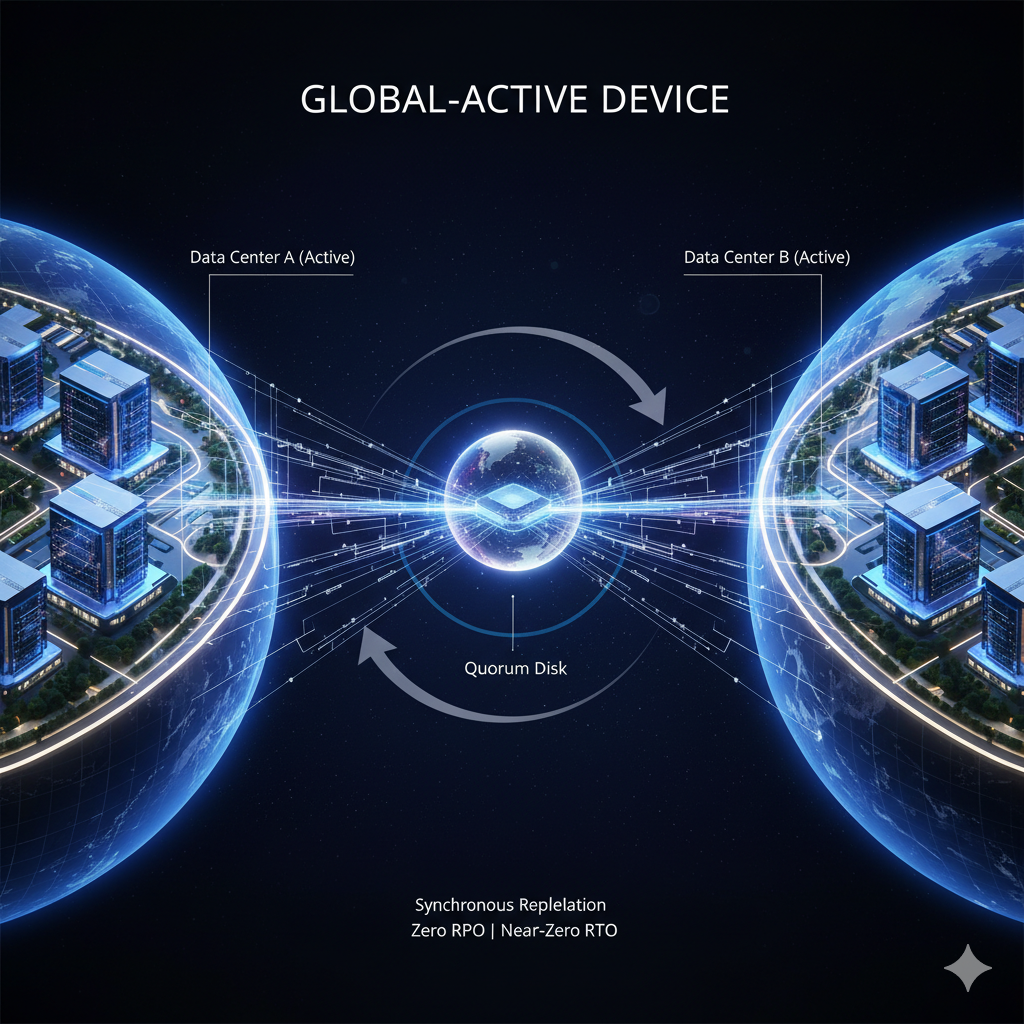Global Active Device: Your Answer to Uninterrupted Business Operations
In today’s digital-first economy, downtime can cripple a business. According to a 2023 Gartner report, the average cost of IT downtime is $5,600 per minute for large enterprises. For industries like banking, healthcare, and e-commerce, outages don’t just mean lost revenue—they risk regulatory fines, reputational damage, and compromised customer trust.
Traditional disaster recovery (DR) models, which rely on passive standby sites, often fail to meet modern needs. They have longer Recovery Time Objectives (RTOs) and allow some data loss (RPO > 0).
The Global Active Device (GAD) solves this by delivering true active-active data center availability.
What is a Global Active Device (GAD)?
A Global Active Device is an advanced enterprise storage technology that allows two geographically separated data centers to operate simultaneously and actively. Unlike traditional setups, where one site is idle, both GAD-enabled sites share workloads in real time.

Hitachi Vantara, a pioneer in GAD solutions, explains that its architecture is designed to ensure *“business continuity without disruption, even during site failures.”
Think of it as running two identical stores in different cities—open 24/7. If one shuts down, the other continues operations seamlessly, with customers never noticing.
How a Global Active Device Works
The strength of GAD lies in three key mechanisms:
1. Synchronous Replication
-
Zero RPO (no data loss). Every transaction written in one site is mirrored in real-time to the other.
-
Supported by enterprise solutions like IBM Global Mirror and Hitachi Global-Active Device.
2. Quorum Disk
-
Prevents the split-brain problem.
-
Acts as a neutral arbiter to decide which site stays active during network failures.
3. Instant Automated Failover
-
Near-zero RTO (instant recovery).
-
Failover happens automatically, without human intervention.
-
Trusted by financial trading platforms and hospital EMR systems where downtime is unacceptable.
GAD vs. Traditional Disaster Recovery
| Feature | Global Active Device (GAD) | Traditional DR (Active-Passive) |
|---|---|---|
| Site Status | Both sites active, sharing workloads | One site active, one standby |
| Replication | Real-time synchronous | Asynchronous, lagging |
| RPO (Data Loss) | 0 – No loss | >0 – Possible loss |
| RTO (Downtime) | Near-zero | Minutes to hours |
| Resilience | Proactive continuous availability | Reactive recovery |
| Operations | Automated, simplified | Manual, complex drills |
Business Benefits of a Global Active Device
-
Uninterrupted Operations
Case studies from IDC show enterprises with GAD experience 70% fewer outages compared to traditional DR. -
Improved Performance
Workloads are distributed across sites, lowering latency for global users. -
Simplified IT Management
Automated failover eliminates time-consuming disaster recovery drills. -
Compliance Support
Meets strict regulatory standards like:-
HIPAA (healthcare)
-
PCI DSS (financial services)
-
GDPR (data protection in EU)
-
-
Customer Trust & Brand Value
Always-on services strengthen confidence among customers, investors, and regulators.
Expert & Industry Validation
-
Hitachi Vantara: Markets GAD as a core solution for banking and critical government systems.
-
IBM Storage Solutions: Offers synchronous replication models for global enterprises.
-
IDC Research (2024): Predicts 50% of Fortune 500 companies will move to active-active architectures by 2027.
-
Case Example: A European stock exchange deployed GAD to maintain zero downtime trading, avoiding millions in potential losses.
FAQs on Global Active Device
Q1. What industries benefit most from GAD?
Industries where downtime = financial or reputational loss, such as banking, stock trading, hospitals, and e-commerce.
Q2. Is GAD affordable for SMBs?
Not typically—its infrastructure requirements make it best for enterprises with mission-critical workloads.
Q3. Is GAD the same as high availability (HA)?
No. HA usually exists within one data center, while GAD synchronizes across multiple geographies.
Q4. Does GAD eliminate disaster recovery?
Not entirely—it evolves DR from reactive recovery into continuous availability.
Conclusion
In a business world where every second of uptime matters, a Global Active Device isn’t just an IT solution—it’s a strategic necessity. By providing:
-
Zero data loss (RPO=0)
-
Near-zero downtime (RTO≈0)
-
Uninterrupted operations across geographies
…GAD empowers enterprises to remain resilient, compliant, and customer-trusted in the face of disruption.

“Organizations that adopt active-active models like GAD are significantly more resilient and better positioned for digital transformation.”
For businesses that cannot afford downtime, GAD is the future-proof solution for business continuity.


Pingback: Prizmatem: How Layered Visual Technology Is Changing Digital Experiences 2025 - Gloobia